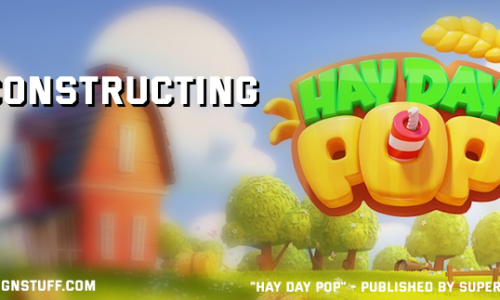Many professional game developers maintain personal projects as a creative outlet. The day to day work can be very restrictive and we operate under tough requirements. Working on the same game for a long time means that the mind is mostly busy the same set the problems within a certain design space.
For me, it is crucial to get my mind of the everyday problems and give me some fresh problems from time to time. This is a personal resume of almost 2 years of working on side projects.
The Goal
When I started a project, the goal was usually pretty simple: “Create something fun”. To see if I have reached my goal, I off course need to create a prototype and then validate the games concept in a playtest.
If a project does not reach the stage of a player holding it in his or her hands, then I consider that project as failed. If there is no player, then there is no game. Projects who reach a stage where I can test them I consider as a success. No matter whether players proved or disproved the concept. These are the ones I could learn the most from as a designer.
20 Projects
In the last 2 years, I have started 20 projects Of which I released one. 3 Other prototypes turned out to be not as much as fun as I thought to be while 16 others I would consider as a failure. I only count projects that I attempted to actually build, so all of the “failed” projects ended during the development phase, for the following reasons.
Reason #1: Design
These projects ended because something went wrong mostly on the design side. I would divide this into two further groups.
The Premature Idea
The reason for these games to get cancelled is that I simply didn’t think them true. The typical story is that I have a “great idea” which sounds super fun in my head but once I start building it, I realize that there are some major holes in the design. Luckily these projects end quite fast and not so much time is wasted.
The Spiral
These are the most dangerous projects. That were stuck in a place where I believed in them and tried really hard to make the design work. One cause for these projects were too high ambitions. In some cases I wanted to create a game that would be valid in the market. This opposed more challenges on the design the project became everything else than fast. In other cases, the designed turned out to be harder to prototype and I went back and forth between paper – and digital prototypes. These projects are dangerous because of a strong Sunk Cost bias combined with the feeling of an imminent breakthrough. Needless to say that the time-cost here is huge. And the more time I invested, the harder it was to end it.
Reason #2: Development
These projects turned out to be too complicated to build in order to prove the initial design. I would argue that the problems of these projects are also rooted in the design phase, though since I could have foreseen many of the issue and complications ahead.
My Learnings
In the creative industry, it is widely accepted that “failing” is part of the process. Motivational quotes that encourage failing are all over the place. But the time spent while failing is only worth it if we take a step back and reflect upon the shambles that lay before us. After all, we want to improve (mostly by not repeating mistakes).
Personally, my biggest challenge is that I stress out too fast. Which is not really helping since these were side project which ought to provide me with some relief by letting me exercise my design-brain. My personal lesson from this time of trying really hard is that the journey is its own reward. While I was going for a solid end result, I forgot to enjoy the moments that lead there. I forgot that the quality of a designer is determined by his or her creative-process and not necessarily the outcome. The outcome of a project (if it is released), varies on many factors. The only thing we can do is to make sure our decision now is the best that we can do.
PS: In my next article, I will lay out some tips which I hope will help people who are on the same path as I am.








